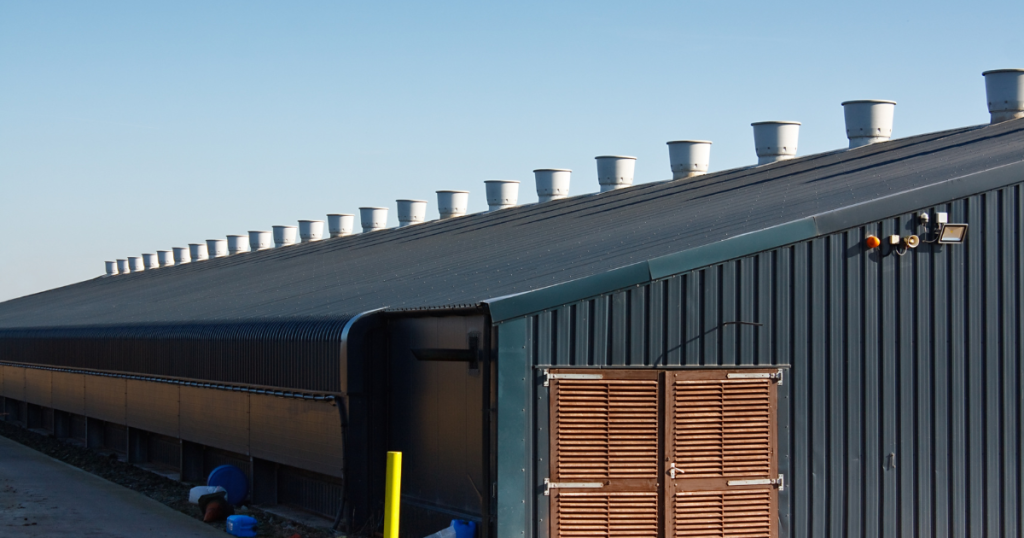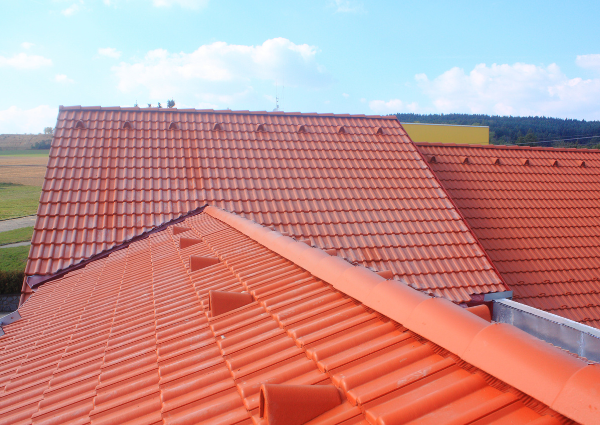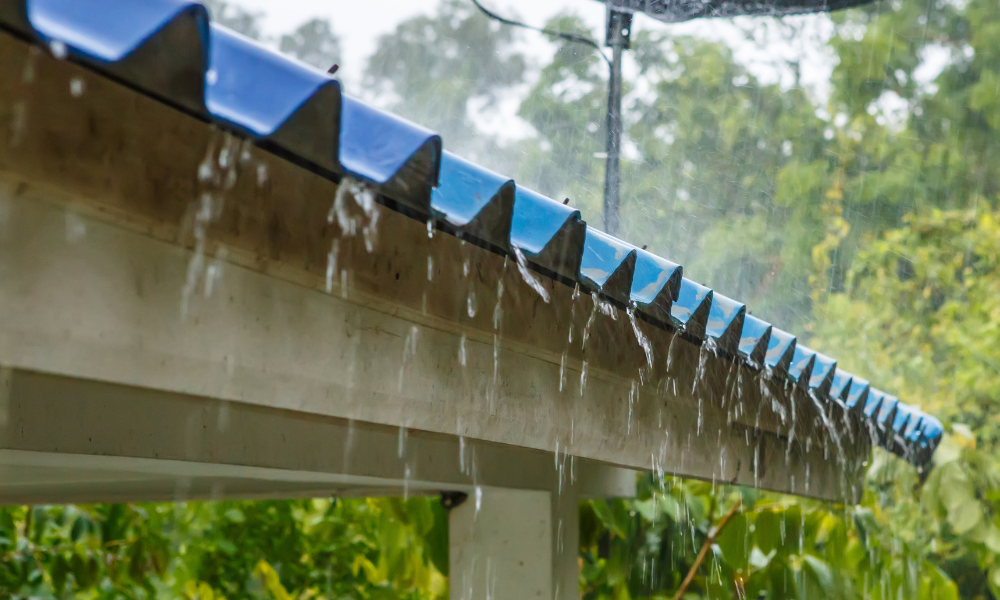Business owners would want to protect their commercial buildings to make them last a lifetime and provide safe infrastructure for their businesses and employees. But it is not enough to install a reliable roofing system, you also have to invest in a roofing membrane to ensure its resistance to different weather conditions.
In this article, we will help you find out the most common types of roofing membranes made specifically for commercial roofs.
What is a roofing membrane?
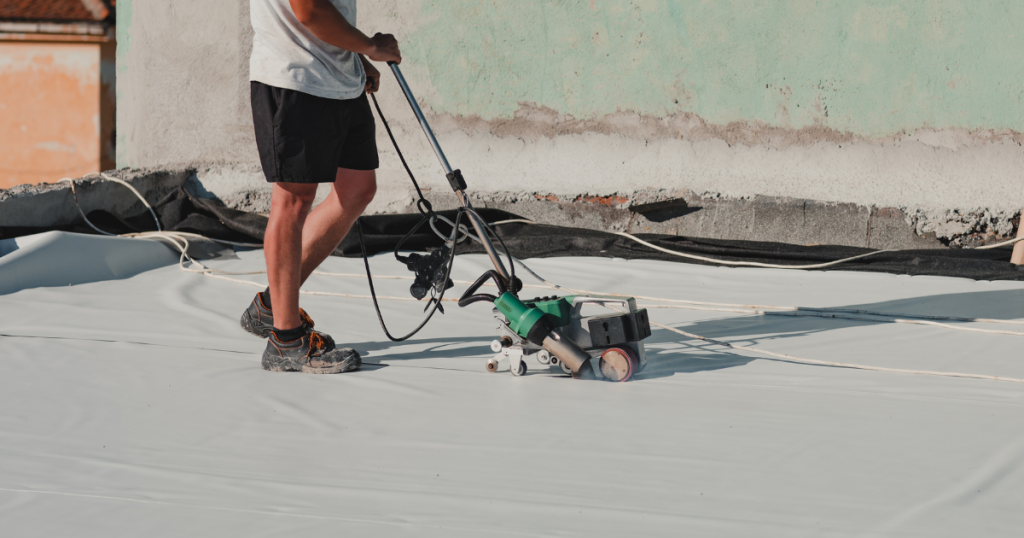
A roof membrane is a type of roofing material that is used to provide a waterproof and weather-resistant layer for a low-slope or flat roof. Membrane roofing is typically made from synthetic materials.
Membrane roofs are usually installed in large sheets or rolls, which are attached to the roof deck using mechanical fasteners, adhesives, or a combination of both. They are typically installed on commercial, industrial, and residential buildings.
Purpose of a Membrane Roofing
The purpose of a roofing membrane is to provide a waterproof and weather-resistant barrier between the building and the elements. Roofing membranes are installed on the roof deck or insulation and provide a continuous covering over the roof surface.
Roofing membranes are designed to protect the building from rain, snow, hail, wind, and UV radiation. They also help to regulate the temperature and moisture levels inside the building.
Read More: What Is Waterproofing Roof Membrane? Uses, Types, Applications
Types of Roof Membranes
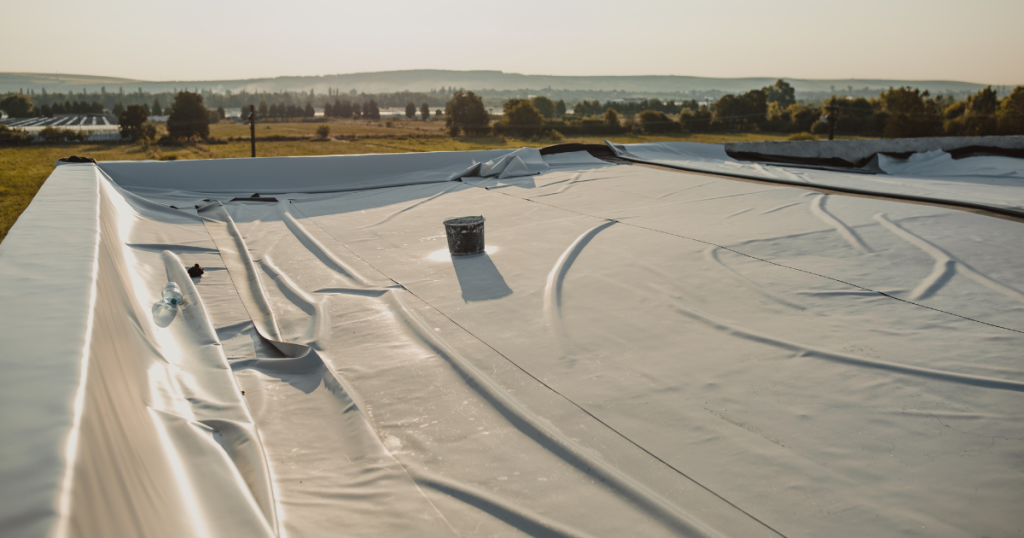
Now, let us talk about the most common types of roof membranes. A roof membrane is a single-ply material made of a layer of synthetic polymer used to cover a building’s roof
Check out the common types of roof membrane that you can use for your commercial building:
PVC Roofs
Polyvinyl chloride (PVC) membrane roof is commonly used for low-slope or flat roofs. It is made from thermoplastic vinyl polymer, which is a type of plastic that is widely used in a variety of applications due to its durability, flexibility, and weather resistance, which is great for commercial roofing.
PVC roofs are typically manufactured in large sheets or rolls, which are heat-welded together to form a continuous, waterproof barrier over the roof surface. The material is available in different thicknesses and colors and may have additional layers for reinforcement or insulation.
Advantages of PVC Roofing Membranes
- Highly resistant to fire
- Long lifespan
- Requires minimal maintenance
- Reduces costs over the lifetime of the roof
Thermoplastic Olefin (TPO)
A TPO roof membrane is made of a single layer of synthetically produced polymer material that is reinforced with a polyester fabric.
TPO roof membranes are typically white or light-colored, which helps to reflect sunlight and reduce the amount of heat absorbed by the roof. This can result in lower cooling costs for buildings. TPO membranes are also known for their resistance to UV radiation, ozone, and chemical exposure.
One of the benefits of TPO roofing is that it can be installed using a variety of methods, including mechanical fasteners, fully adhered adhesives, or ballasted systems. This makes TPO roofing suitable for a wide range of roofing applications and allows for installation flexibility.
Advantages of TPO Roofing Membranes
- Durable
- Easy to install
- Great at energy efficiency
Ethylene Propylene Diene Monomer (EPDM)
Ethylene Propylene Diene Monomer (EPDM) is another type of membrane material commonly used for low-slope roofs. It is a synthetic rubber material made of ethylene, propylene, and a small amount of diene monomer.
EPDM roofing membranes are available in both black and white colors, with black being the more common color used. They are known for their durability, flexibility, and weather resistance, with a lifespan of up to 30 years or more.
These roof membranes can be installed using mechanical fasteners, fully adhered adhesives, or ballasted systems. The installation process is typically straightforward and quick, making it a cost-effective option for many commercial and industrial building owners.
Advantages of EPDM Roofing Membranes
- Has a lifetime of over 30 years
- Low environmental impact
- Can withstand extreme temperatures and weather conditions, including hail, high winds, and heavy rain
[Read More: Top 3 Commercial Roof Waterproofing Materials]
What is the most common roof membrane?
EPDM is a durable roof covering that reflects the sun’s light rays. Its durability is versatile and easy to install.
What is the most durable roof membrane?
EPDM membrane roofing is very durable which is essentially similar to splinter-resistant rubber roofing. Because of its strength, a fully-adhered EPDM flat roof system can last between 25-30 years.
What’s the Average Commercial Membrane Roofing Cost in Phoenix, AZ?
The average cost of commercial membrane roofing in Phoenix, Arizona ranges from about $7,000–$23,000 depending on the materials used and the contractor’s rates.
Get Professional Help from a Roofing Contractor

Installing a roof membrane can significantly increase the life expectancy of your commercial building.
A credible roofing contractor like Easy Roof Solutions can help you choose the best type of roof membrane for your commercial building depending on your needs. Give us a call for a free estimate!
Ken Byler
Founder of Easy Roof Solutions, LLC. He started in the construction industry at the age of 14 and has been involved in it for over 25 years. His wide experience in commercial roofing speaks for itself.
Outside his roofing work, Ken enjoys being in the great outdoors, traveling to new places, and bonding with his wife and children.

